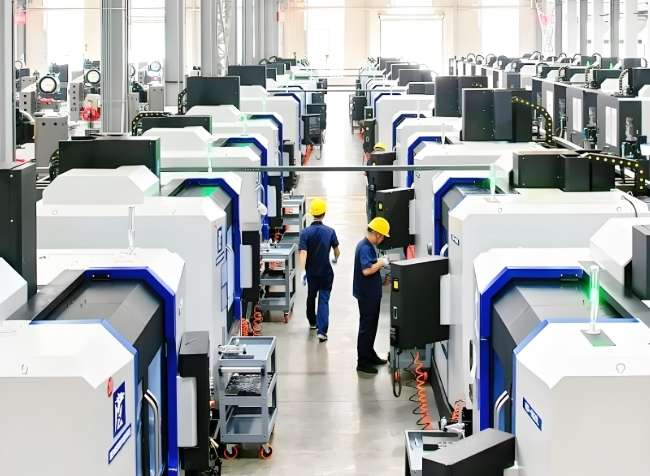
Problems in the supply chain happen. Some, like your favorite pizza place delivering a cold pizza because the delivery kid ran out of gas, are irritating. Others, such as a three-week delay on a shipment from an overseas supplier, can prove disastrous.
You cannot eliminate all issues within your supply chain. However, you can eliminate most if you know where to look. The time to discover vulnerabilities in your company’s supply is before something happens. Do you know what to look for? Here are some problem areas common to many supply chains.
Scaling Workforce with Demand
Business is going well. Your product is experiencing increasing demand. As a result, you tell your supplier about the coming order that is triple the size of all previous orders. The supplier relied on an experienced workforce to handle your projects. Now, they must hire more workers to accommodate your success.
This may sound like a win-win. However, there is no guarantee your supplier is able to hire employees with the same level of experience as existing workers. The result could be an increased potential for a drop off in quality.
Multiple Components; Multiple Sources
Perhaps your company uses multiple suppliers for sheet metal fabrication, finishing/painting and assembly. These suppliers may be very good at what they do and if they work together in delivering your order, everything is fine.
Unfortunately, this seldom happens and you spend a large amount of time ensuring product flow moves according to your company’s needs. You have little control over delays caused by downtime and shipping your product from one supplier to the next. At some point, minor delays will turn into major problems.
Offshoring Complications
Dealing with an overseas supplier frequently offers savings from low labor costs and helps increase profitability. The downside has the potential to destroy profits. For example, problems arise whether your parts come from down the block or around the world. However, it is less likely a different language will pose a challenge from a supplier down the block.
Overseas suppliers not only may speak a different language, but also work in a different time zone. The net result is the potential for increased confusion and delays.
These are just three examples illustrating the vulnerability of a supply chain. At Precision Metal Industries, our team has developed a checklist of six areas that can cause problems in your supply chain. This free resource can be essential in keeping track of your supply chain and anticipating all problems before they occur. Visit us today to download your free copy, and contact us with any questions.
Supply Chain Blind Spots: Three Silent Profit Leaks You Can’t Afford to Ignore
Cold pizza from your favorite joint? Annoying. A three-week overseas shipment delay? Business cardiac arrest.
While supply chain glitches are inevitable, their impacts range from mild irritation to existential threats. The difference lies not in preventing all failures – an impossible feat – but in surgically eliminating critical vulnerabilities before they trigger chain reactions. Consider these common rupture points:
1. The Labor Scaling Mirage
Business surges feel exhilarating until production quality unravels. Picture this: you triple orders with a trusted supplier riding their skilled workforce’s coattails. To meet demand, they rush-hire new hands. But competence dilution creeps in silently – fresh recruits lack the muscle memory of veterans. Suddenly, defect rates spike while you stare at shipment deadlines like unexploded ordnance.
The Antidote: Demand skills-transfer blueprints with scaling contracts. Verify training pipelines before ramping volumes.
2. The Multi-Vendor Relay Race
You’ve assembled specialists: one for precision stamping, another for ceramic coating, a third for final assembly. Individually brilliant. Collectively chaotic.
Each handoff between suppliers introduces friction – transport delays creeping like rust, communication gaps widening like faulty seams. When production timelines resemble fragile domino arrays, a single supplier’s machine hiccup cascades into missed quarterly targets. You become an unpaid air traffic controller for your own goods.
The Fix: Designate a "conductor vendor" responsible for orchestrating movements. Penalize latency at interchange points.
3. The Offshore Illusion
Cheaper labor rates glitter from afar. Then reality bites: a misunderstood specification due to language nuances, a critical email sleeping across time zones, customs paperwork blooming into Kafkaesque nightmares. What saved 20% in direct costs now consumes 50% more management bandwidth and stretches lead times thinner than stretched polymers.
Distance magnifies errors. An 8,000-mile buffer transforms minor hiccups into operational earthquakes.
The Vigilance Dividend Monitoring these pressure points yields compound returns:
Supply chains aren’t static pipelines but living ecosystems. Treat monitoring not as expense, but as perpetual reconnaissance – because in global commerce, early detection separates manageable incidents from full-blown crises. The wisest investments target vulnerabilities before they target you.